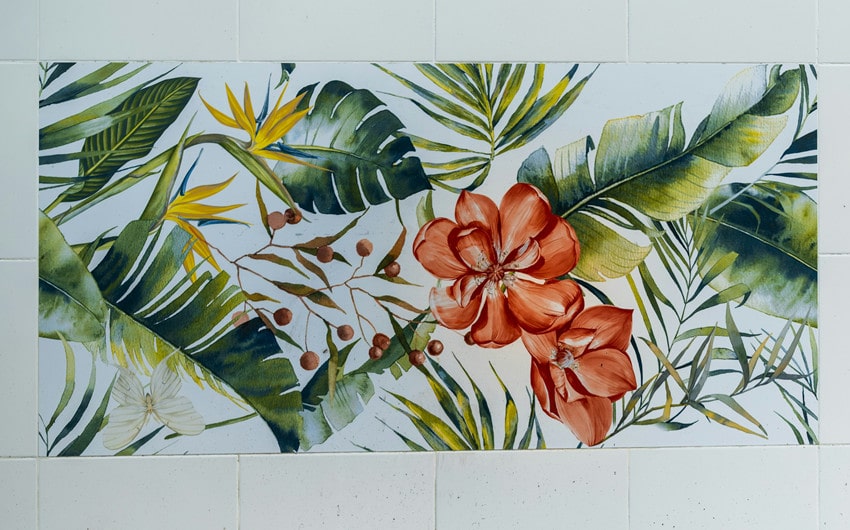Heritage and Innovation in Island Artistry
The art of islands is a captivating fusion of tradition and innovation. In Hawaii, this blend creates a unique cultural tapestry where ancient motifs meet contemporary techniques. As global influences merge with local heritage, island art continues to evolve dynamically.
Island cultures have always embraced a unique blend of traditional and modern art forms, creating a vibrant tapestry that reflects their diverse histories and identities. This fusion is particularly evident in modern hawaiian art, where traditional motifs are seamlessly combined with contemporary techniques. As you explore the evolution of these art forms, you’ll discover how they adapt over time while preserving their cultural essence. This artistic journey appeals to anyone intrigued by the ways in which cultural heritage can both influence and be influenced by contemporary trends.
Roots of island artistry
Traditional island art is deeply rooted in motifs and themes that have been passed down through generations. These elements serve as visual narratives, preserving the stories, beliefs, and cultural identities of the people. In Hawaiian art, motifs such as the honu (sea turtle) or kalo (taro plant) are not merely decorative but carry profound meanings related to creation myths and ancestral lineage. These symbols act as a bridge between the past and present, maintaining a tangible connection to heritage.
The role of traditional elements in storytelling cannot be overstated. They offer a visual language that communicates cultural values and historical narratives. As you engage with this artistic tradition, you’ll find that these motifs are more than just aesthetic choices; they embody the spirit of the islands and their people. By preserving these traditional themes, artists ensure that their cultural stories remain alive and relevant for future generations.
This deep-seated reverence for tradition is what makes island art so compelling. It provides a lens through which viewers can appreciate the richness of island cultures. As you engage with these works, you become part of an ongoing dialogue between past traditions and contemporary interpretations.
Innovative techniques and influences
Contemporary island artists are redefining traditional boundaries by incorporating modern techniques and materials into their creations. This evolution is fueled by the influence of global art trends and technological advancements. Artists are at the forefront of this movement, blending digital media with classic themes to create works that resonate on multiple levels.
The impact of technology on artistic expression is profound, offering new tools for creativity while expanding the scope of what can be achieved visually. As a result, modern Hawaiian art is characterized by a dynamic interplay between old and new, where artists draw inspiration from both indigenous practices and international movements. This fusion enriches the visual landscape, inviting audiences to experience familiar themes through fresh perspectives.
By engaging with these innovations, artists can push the boundaries of traditional art forms without losing sight of their cultural roots. This balance between innovation and heritage ensures that island artistry remains vibrant and relevant in today’s interconnected world.
Inspiration from natural surroundings
The natural landscapes of islands play an integral role in shaping artistic expression. The lush environments provide an endless source of inspiration for artists who seek to capture their beauty and essence in their work. This connection to nature is evident in many artistic pieces that depict breathtaking vistas or intricate details found in flora and fauna.
The interplay between environment and creativity is particularly prominent in Hawaiian art, where artists draw upon the serene landscapes to inform their compositions. This relationship not only highlights the importance of environmental conservation but also emphasizes how nature serves as both muse and subject for creators across generations.
For those who engage with island art, this emphasis on natural beauty offers a window into how deeply intertwined culture is with its surroundings. Whether it’s through a painting or sculpture, artists convey a sense of place that resonates deeply with audiences who appreciate this harmonious relationship.
Cultural exchange and evolving artistry
Cultural exchange has significantly impacted the evolution of island art by introducing new ideas while fostering dialogue between different artistic traditions. Globalization has accelerated this exchange, enabling artists to incorporate diverse influences while maintaining their unique cultural identities.
As you explore this dynamic landscape, you’ll notice how artists skillfully balance incorporating external elements without compromising authenticity. This delicate dance allows them to remain rooted in tradition while embracing new forms—a testament to their adaptability amid changing global contexts.
This balance reflects broader societal shifts towards inclusivity within arts communities worldwide—an acknowledgment that creativity thrives when boundaries dissolve rather than constrain. Whether it’s through collaborative projects or individual endeavors, the result is always enriched artistry imbued with cross-cultural appreciation. For those interested in collecting art, a Hawaii postcard can serve as a beautiful reminder of this cultural fusion.


